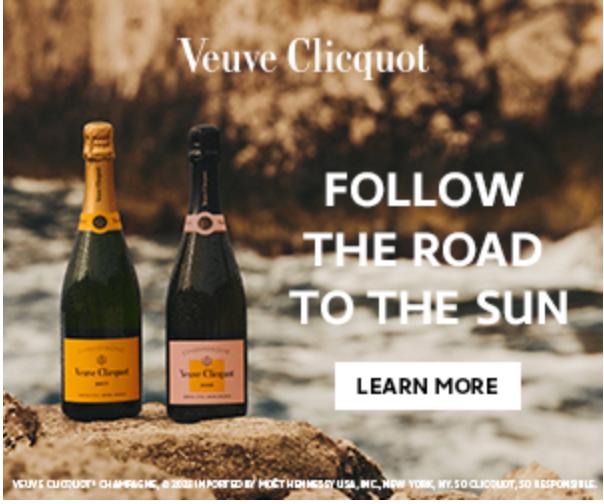NYC is in Love with “Rich caramel and vanilla”, “Black peppercorn”, “lingering notes of baking spice” Knob Creek Anncs 10 Year Old Rye Whiskey
Knob Creek 10 Year Old Rye Whiskey.
Made pre-Prohibition style, Knob Creek 10 Year Old Rye is carefully crafted and patiently aged for a decade in deeply charred barrels delivering a full-bodied rye whiskey.

Knob Creek 10 Year Old Rye is carefully crafted and patiently aged for a decade
This extra-aged rye whiskey demonstrates Knob Creek’s® unwavering commitment to craftsmanship and bringing whiskey enthusiasts full-flavored whiskey, while expanding its rye portfolio.
Knob Creek’s unwavering commitment to craftsmanship
“Whiskey enthusiasts know when they’re drinking our whiskey,
it’s aged to perfection
and crafted with exceptional full flavor.
We’re excited to bring an extra-aged rye whiskey with even more robust flavors from a decade of aging in our barrels,”
Freddie Noe,
Eighth Generation Master Distiller.
“When my grandfather created Knob Creek® over 30 years ago, he set out with the intention to craft a premium whiskey without shortcuts, and we’re excited to continue his legacy – I know he’d love it, just like our fans will.”
Since the inaugural launch of Knob Creek® Straight Rye Whiskey in 2012, Knob Creek® has consistently been at the forefront of the rye category. Knob Creek® 10 Year Old Rye boasts a bold and complex flavor profile, capturing the essence of Knob Creek’s® traditional rye while delivering deeper notes of rich caramel, creamy vanilla, and robust oak and char notes imparted by additional years spent aging in the barrel.
Knob Creek® 10 Year Old Rye Whiskey is bottled with the following characteristics:
- Proof: 100
- Color: Tawny with waves of copper
- Aroma: Rich caramel and vanilla, deep rye spice, and dried apple
- Taste: Black peppercorn, creamy vanilla and caramel, and hints of deep oak and char
- Finish: Smooth, lingering notes of baking spice
Knob Creek® 10 Year Old Rye is now available nationwide with a suggested retail price of $69.99 for a 750mL bottle. Enjoy Knob Creek® 10 Year Old Rye neat, on the rocks or in a cocktail of your choice.
For more information about Knob Creek® 10 Year Old Rye Whiskey and Knob Creek’s® award-winning* bourbon and rye portfolios,
please visit www.KnobCreek.com or visit us on Instagram @KnobCreek.
About Knob Creek® Bourbon
Knob Creek® has set the standard for super-premium whiskey for three decades by crafting extraordinary full-flavored bourbon with a rich taste. Knob Creek® bourbons and ryes are patiently aged to perfection in new, maximum charred American Oak barrels to impart the biggest and fullest flavor on their whiskey. No matter the expression, Knob Creek® is crafted without shortcuts and embodies the pre-Prohibition style that founding distiller Booker Noe created in 1992. Since then, Knob Creek® has lived up to such standards with the introduction of Knob Creek® Straight Rye Whiskey in 2012, and later on, Knob Creek® Single Barrel Select Rye Whiskey. In recent years, Knob Creek® announced the permanent addition of Knob Creek® 12 Year Old Bourbon to its portfolio, launched two limited releases, Knob Creek® 15 Year Old Bourbon and Knob Creek® 18 Year Old Bourbon, and announced the addition of an age statement to its flagship rye whiskey, Knob Creek® 7 Year Old Rye Whiskey.
About Suntory Global Spirits
As a world leader in premium spirits, Suntory Global Spirits inspires the brilliance of life by delivering great consumer experiences through its world-class portfolio of brands. Known for its craftsmanship of premium whiskies, including Jim Beam®, Maker’s Mark®, Basil Hayden® and Knob Creek® bourbons; Japanese whiskies, including Yamazaki®, Hakushu®, Hibiki® and Toki™; and leading Scotch brands including Teacher’s, Laphroaig® and Bowmore®, Suntory Global Spirits also produces leading brands such as Courvoisier® cognac, Tres Generaciones®, El Tesoro® and Hornitos® tequila, Roku™ and Sipsmith® gin, Canadian Club® whisky, and is a world leader in ready-to-drink cocktails, with brands like -196 and On The Rocks™ Premium Cocktails.
A global company with approximately 6,000 employees in more than 30 countries, one of Suntory Global Spirits’ core values is Growing for Good and through its Proof Positive sustainability strategy, the company has committed to ambitious goals and investments to promote environmental sustainability in its operations, ensure the company has a positive impact on the communities where employees live and work, and programs to educate and inform consumers to make the right personal choices about drinking. Headquartered in New York City, Suntory Global Spirits is a subsidiary of Suntory Holdings Limited of Japan. For more information on Suntory Global Spirits, its brands, and its commitment to social responsibility, please visit www.suntoryglobalspirits.com and www.drinksmart.com.



